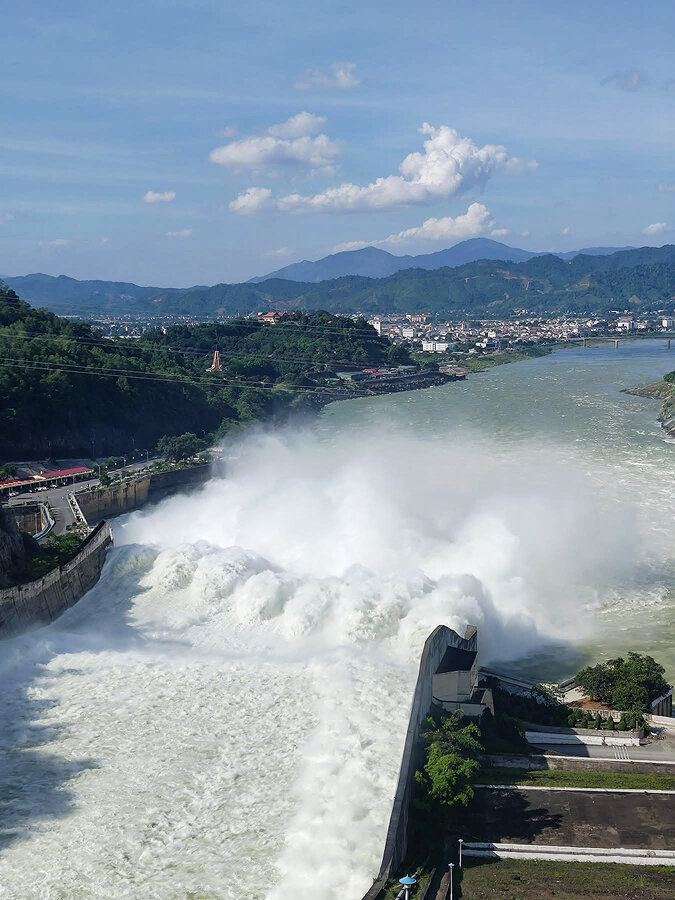Each flood discharge is a challenge to the livelihoods of households living in the downstream area, especially the fishing village in Group 14, Thinh Lang Ward (old), now Hoa Binh Ward, Phu Tho Province.
The boats - the most important livelihood assets of the people of the fishing village - are tied with ropes and oars anchored all day on the riverbank.
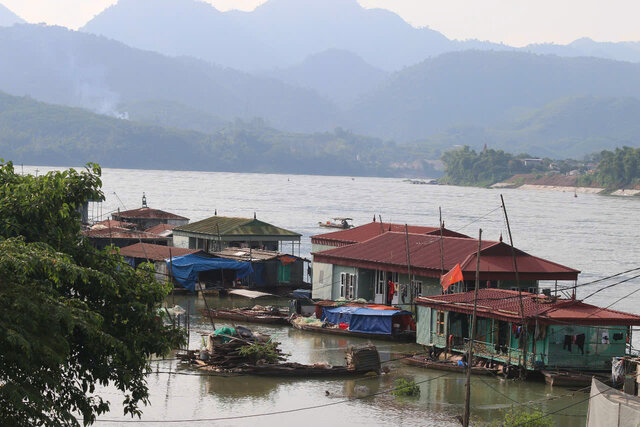
"Not surprising, but still difficult. The water rose, and my family's fish cages died a few kilos. To keep the remaining fish safe, the family moved all the cages to the Gai stream area, near the area adjacent to the old Tan Hoa ward. As for boats that are still there, they must anchor closer to the shore to avoid drifting when the water rises, said Ms. Le Thi Hanh, a fishermen in the fishing village.
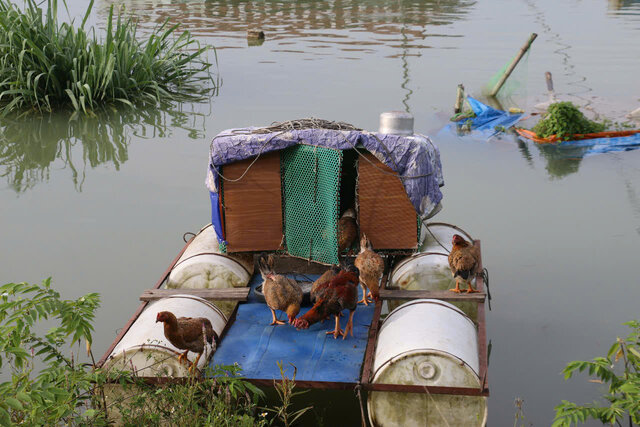
Although the authorities had informed in advance, the flood discharge of hydropower plants still caused the entire village to find a way to cope. Many households have to stop working every day to watch fish rafts and boats because they are afraid that their boats will drift away.
"The ropes were tied tightly, but the water was strong. We have to temporarily stop fishing every day to watch the boats and rafts of fish or they will drift away. In the next few days, we will probably have to use alum to filter the clean water, because when the river water rises, it will clump and no longer be there," said Mr. Ngo Van Thi.
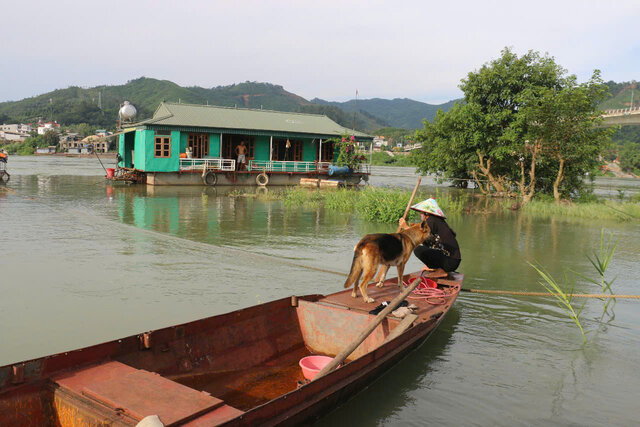
Before the flood discharge, local authorities had provided early information, organized propaganda, and reminded people living along the river to take proactive measures to respond.
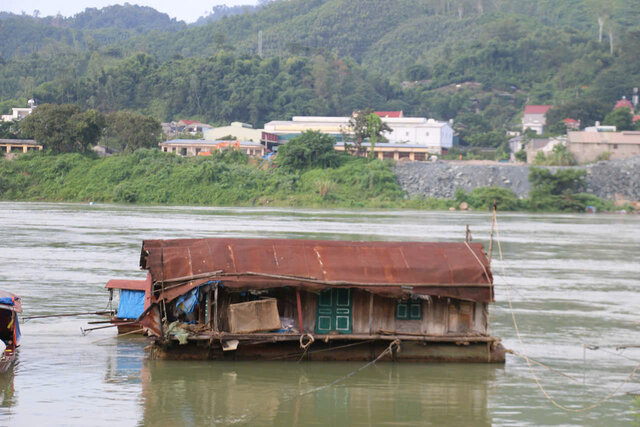
Mr. Ngo Van Thong, Head of the fishing village, said: "The local government and the village regularly propagate and remind people to proactively anchor their boats and prepare response plans when there are notices of flood discharge.
According to Mr. Thong, this time is the same, before the hydropower plant released the flood, all motorbikes of the fishing village people were moved to the riverbank. Some households with small quantities of fish died on the first day of the flood, they moved their rafts further away to keep the fish herd safe.
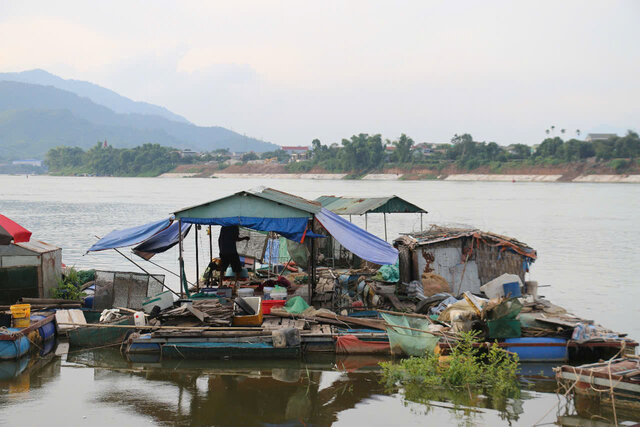
Flood discharge is no longer rare, but each time is a concern because of the risk of causing unsafety, affecting the livelihoods of people in the fishing village.
"Living in rivers is already risky and precarious with each flood season, so people are advised not to be subjective, especially during hydropower plants releasing floodwaters. We also note that households need to be cautious when using river water in daily life, ensuring hygiene and health, especially during days when the river water is cloudy and the flow is strong," Mr. Thong added.
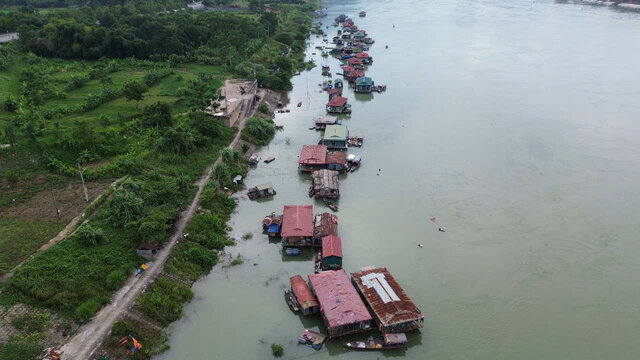
As of 9:00 a.m. on July 18, according to an update from Vietnam Electricity Group, the water flow to Hoa Binh Lake was 3,447m3/s; the total discharge was 5,969m3/s.
Previously, on July 9, Hoa Binh Hydropower Company was ordered to open 1 bottom spillway. Then, on July 15, they were ordered to open the second bottom spillway; on July 17, Hoa Binh Hydropower Company was ordered to open the third bottom spillway at 3:00 p.m.
